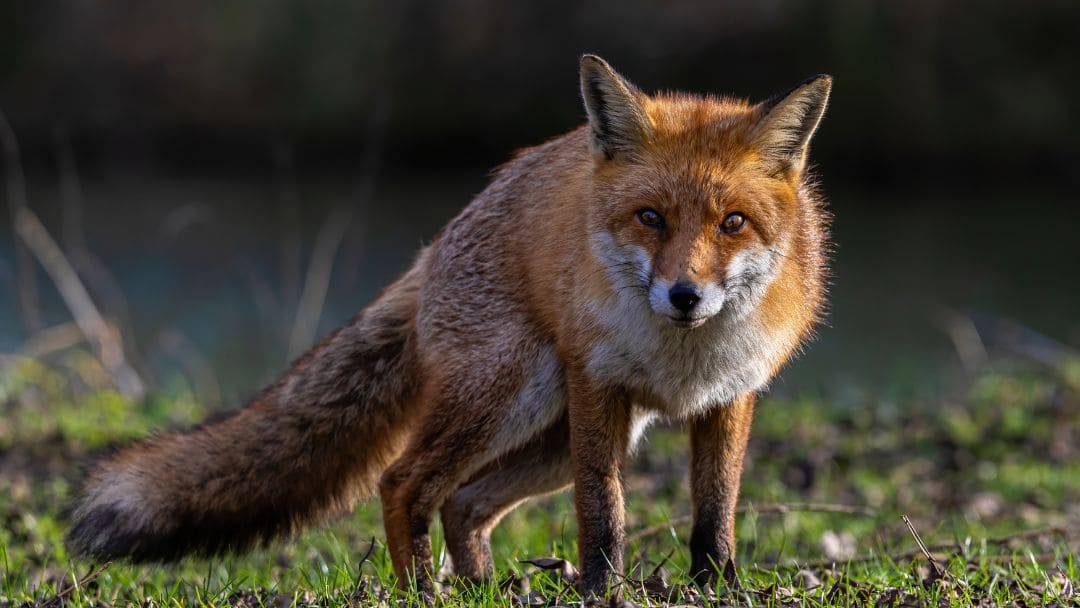The captivating world of foxes extends far beyond their physical adaptations and cunning hunting strategies.
Throughout history, these clever creatures have woven themselves into the rich tapestry of human cultures, sparking myths, legends, and folklore that continue to intrigue us today.
A Worldview Woven with Foxes
Foxes haven’t just earned a reputation for being clever – they’ve also captured the imaginations of people worldwide. Let’s delve into some of the most prominent fox figures in folklore:
- Japan’s Kitsune: In Japanese folklore, the kitsune, or fox spirit, holds a powerful place. These intelligent creatures possess magical abilities, including shapeshifting. Kitsune can be benevolent guardians or mischievous tricksters, their behavior depending on their mood and intentions.
- China’s Huli Jing: Chinese mythology introduces the huli jing, a captivating nine-tailed fox spirit. Often associated with seduction and transformation, these mythical foxes challenge human perception. They embody themes of desire, illusion, and the boundaries between the human and spirit realms.
- Europe’s Reynard the Fox: Moving westward, European folklore features Reynard the Fox, a cunning trickster whose adventures have been told for centuries. Reynard’s wit and resourcefulness allow him to outsmart his foes, making him a beloved figure in medieval literature.
More Than Just Stories: The Significance of Fox Folklore
These fox-related myths are more than just entertaining tales. They serve as a window into the cultural values, fears, and desires of the societies that created them:
- Reflecting the Human Condition: The kitsune, for example, symbolizes the duality of human nature – the potential for both good and evil within each of us.
- Questioning Reality: The huli jing embodies themes of transformation and the unknown, prompting us to contemplate the boundaries between reality and fantasy.
- Challenging Morality: Reynard the Fox’s cunning challenges conventional ideas of morality, sparking conversations about wit versus deceit.
The Human-Nature Connection: In a broader sense, these myths remind us of the deep connection between humans and the natural world. Foxes, as characters in these tales, blur the lines between human and animal realms, emphasizing our interdependence with the environment. As we explore these captivating myths and legends, we discover not only the fascinating world of foxes but also the intricate stories humans weave through their imaginations.
A Global Chorus of Fox Tales: Folklore from Different Regions
Foxes have danced across the pages of folklore worldwide, leaving behind a trail of mesmerizing stories and beliefs that vary from one region to another. Let’s embark on a journey through some of the most intriguing fox folklore from different corners of the globe:
- Japan’s Kitsune: As mentioned earlier, Japan’s kitsune holds a special place in folklore. Believed to possess incredible intelligence and magical abilities, these complex creatures can be benevolent protectors or mischievous tricksters.
- Korea’s Kumiho: Korean folklore introduces the kumiho, a nine-tailed fox with the power to transform. Similar to the kitsune, the kumiho can appear human and often seeks to become one permanently. This captivating creature serves as a cautionary tale, warning against trusting appearances.
- Native American Fox Folklore: Indigenous cultures in North America have their own fox folklore. Among the Hopi and Navajo tribes, the swift fox is revered as a clever trickster. These stories teach valuable lessons about resourcefulness and wit, emphasizing the importance of intelligence in survival.
Regional Variations: A Tapestry of Imagination
Fox folklore showcases the rich tapestry of human imagination, and regional variations add layers of uniqueness to these tales. The kitsune in Japan might be seen as protectors, while the kumiho in Korea is a symbol of danger. In contrast, Native American fox folklore may emphasize the cunning needed to survive in the wild.
Each region’s fox tales reflect its cultural values, fears, and the relationship between humans and nature. These stories not only entertain but also offer insights into the human psyche and our deep connection with the natural world. As we explore these regional variations, we are reminded that foxes, with their enigmatic behaviors, continue to inspire our storytelling traditions.
So, the next time you encounter a fox, remember that you’re not just looking at a clever animal – you might be gazing into a creature woven into the fabric of human cultures and folklore for centuries.
Intriguing FAQs: Unveiling the World of Fox Folklore
Why are foxes prominent figures in folklore?
- Foxes have earned a reputation for being clever and adaptable creatures. These qualities, along with their sometimes mysterious behaviors, have sparked imaginations for centuries. Foxes appear in myths and legends around the world, symbolizing various concepts and reflecting cultural values.
What are some examples of famous foxes in folklore?
- Kitsune (Japan): Intelligent fox spirits with shapeshifting abilities, Kitsune can be benevolent guardians or mischievous tricksters.
- Huli Jing (China): Nine-tailed fox spirits associated with seduction and transformation, Huli Jing challenges human perception and blur the lines between reality and fantasy.
- Reynard the Fox (Europe):– A cunning trickster whose adventures are told in medieval literature, Reynard outwits his foes with wit and resourcefulness.
What can we learn from fox folklore?
Fox myths and legends offer more than just entertainment. They reflect the cultural values, fears, and desires of the societies that created them. These stories can teach us about:
- Duality of Human Nature: The Kitsune represent both good and evil within us.
- Questioning Reality: The Huli Jing challenge us to contemplate the boundaries between real and fantastical.
- Cunning and Morality: Reynard the Fox’s exploits make us consider the difference between cleverness and deceit.
- Human-Nature Connection: Foxes in folklore blur the lines between human and animal, reminding us of our interdependence with the natural world.
How does fox folklore vary around the world?
Fox folklore showcases regional variations. The Kitsune in Japan might be seen as protectors, while the Kumiho in Korea is a symbol of danger. Native American fox tales may emphasize the importance of cunning for survival. These variations highlight the diverse cultural interpretations of foxes.
Why is fox folklore still relevant today?
Fox folklore reminds us of the power of storytelling and the enduring connection between humans and the natural world. Exploring these tales allows us to appreciate the rich tapestry of human imagination and the ways cultures have interacted with foxes throughout history.
The stories also remind us of the importance of foxes in the natural world and the value of their continued existence.


